







Change process: A comprehensive guide to successful transformation
What is a change process?
A change process describes the structured process of transformation within an organization. It encompasses all steps from recognizing the need for change to its complete implementation and integration into the corporate culture. Change processes can affect various areas, such as structures, processes, technologies, or the corporate culture itself.
The Importance of Change Management
Change management is a systematic approach to managing change in organizations. It aims to manage the transition from an existing state to a desired target state as efficiently and effectively as possible. Change management considers both the technical and human aspects of change.
Phases of Change
A successful change process typically goes through several phases:
- Preparation: Analyzing the initial situation and defining goals
- Planning: Developing a change strategy and timeline
- Implementation: Implementing the planned change measures
- Stabilization: Embedding the changes in the organization
- Evaluation: Assessing success and, if necessary, adjusting
Change Management Methods
There are various methods and models that structure and support the change process. Here are some of the most well-known:
1 Kotter's 8-step model
1. Create urgency
2. Build a leadership coalition
3. Develop vision and strategy
4. Communicate vision
5. Remove obstacles
6. Plan short-term successes
7. Consolidate changes
8. Anchoring new approaches in the culture
2. the ADKAR model
- Awareness
- Desire
- Knowledge
- Ability
- Reinforcement
3. The Kübler-Ross change curve
This model describes the emotional phases that people go through during a change process:
1. Shock
2. Denial
3. Frustration
4. Depression
5. Experiment
6. Decision
7. Integration
Success factors in the change process
The following factors are decisive for a successful change process:
- Clear vision and goals
- Strong leadership and support from top management
- Effective communication
- Involvement of employees
- Provision of necessary resources
- Flexibility and adaptability
- Measurement and monitoring of progress
The role of visualization in the change process
Effective visualization can significantly support and accelerate the change process. This is where DIALOGBILD comes into play. DIALOGBILD specializes in visualizing complex change processes and thus making them tangible.
How DIALOGBILD supports the change process:
1. Creating an overview: A dialog picture visualizes the entire change process and makes it understandable for everyone involved.
2. Promotion of communication: the picture serves as a basis for discussion and facilitates dialog between managers and employees.
3. Emotional activation: The visual representation appeals to emotions, which increases acceptance of change.
4. Provide orientation: The dialog picture shows the path from the actual to the target state and thus provides orientation in the change process.
5. Increase motivation: The visualization of goals and milestones motivates employees to actively participate in the change process.
Practical tips for a successful change process
1. Analyze the initial situation: understand exactly why changes are necessary and what goals are to be achieved.
2. Develop a clear vision: formulate a clear picture of the future that serves as a guide for everyone involved.
3. Communicate transparently: provide regular updates on progress and the next steps in the change process.
4. Involve employees: create opportunities for employees to actively participate in the change process.
5. Train your managers: Equip your managers with the necessary skills to successfully lead the change process.
6. Celebrate successes: recognize milestones achieved to maintain motivation.
7. Stay flexible: be ready to adapt your strategy when circumstances change.
8. Use visual aids: rely on visualizations such as dialog pictures to make the change process tangible.
Dealing with resistance
Resistance is a natural part of any change process. Here are some strategies for dealing with it:
- Listen actively and take concerns seriously
- Communicate the reasons and benefits of the change clearly
- Offer support and training
- Identify and promote change champions
- Be patient and allow time for adaptation
Conclusion
A successful change process is crucial for the future viability of companies. By understanding the different phases, applying proven change management methods and using visualization tools such as dialogu pictures, you can effectively design and implement change in your company. Remember: change is not only a challenge, but also an opportunity for further development and innovation. With the right approach and the right tools, you can lead your change process to success and make your company fit for the future.
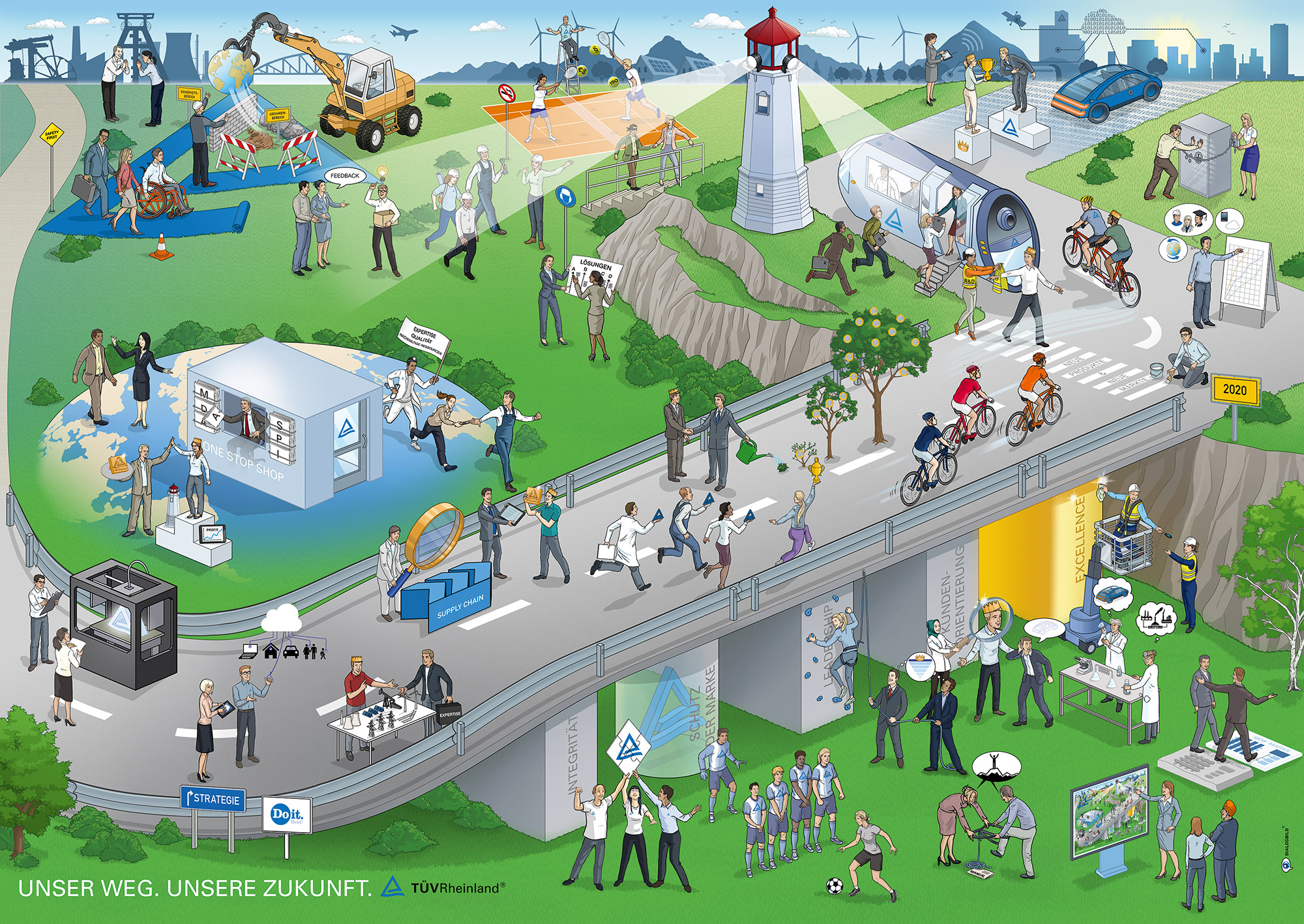
OUR WAY. OUR FUTURE.
THE FUTURE PICTURE FOR TÜV RHEINLAND
The TÜV Rheinland Group is a leading provider of technical services worldwide. Founded in 1872 and headquartered in Cologne, the Group employs 20,000 people, 8,000 of them are based in Germany. It generates annual revenues of € 1.88 billion. The Group′s mission and guiding principle is to achieve sustained development of safety and quality in order to meet the challenges arising from the interaction between man, technology and the environment.
TÜV Rheinland started a comprehensive change program which addressed a new strategy, projects to improve internal processes and changes of the company culture and leadership culture. ...
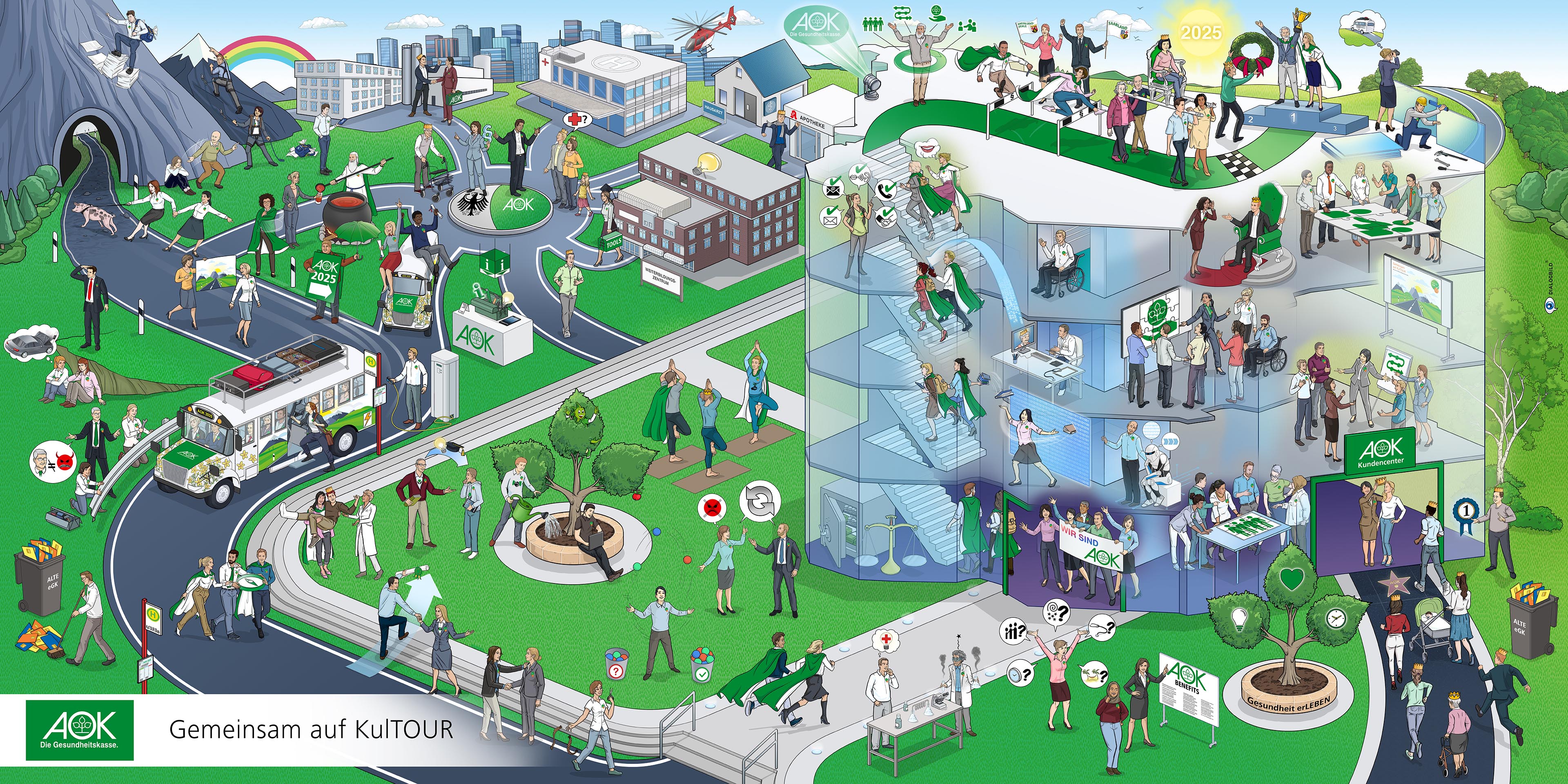
OUR CULTOUR CHANGE
WHO WE ARE. HOW WE ARE. WHERE WE WANT TO BE.
AOK Rheinland-Pfalz/Saarland - The health insurance company is the largest health insurance company in the two federal states of Rhineland-Palatinate and Saarland, with over 1. 2 million insured persons and 85,000 supervised employers as well as around 3,500 employees. The health insurance fund maintains business relationships with more than 100 hospitals, 10,000 doctors, psychotherapists and dentists, around 1,300 pharmacies and many hundreds of other contract partners. It offers high-quality care for the population and tailor-made concepts in the regions. For this, modern, future-oriented structures are also essential in the corporate culture. ...
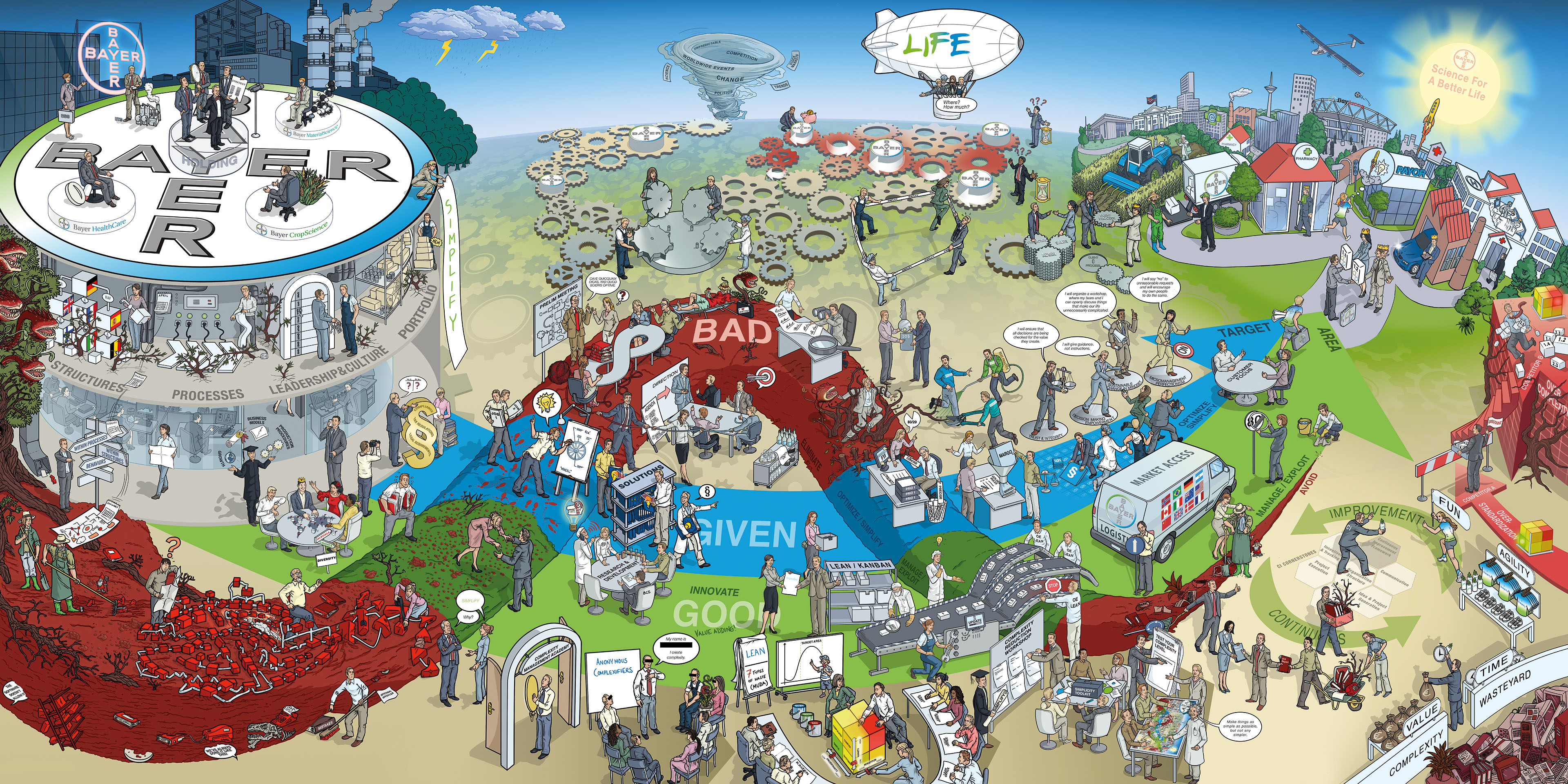
SIMPLIFY
"MAKE THINGS AS SIMPLE AS POSSIBLE, BUT NOT ANY SIMPLER."
Simplify - that's the goal of the complexity reduction program within Bayer AG. Working life should be made simpler, clearer and without unnecessary hurdles. Each employee can contribute to his or her area of responsibility. The dialog picture is used to talk about complexity and to identify it. It illustrates how complexity can arise, how it complicates daily work, why it harms the company. And there are tips and impulses, which can be against complexity. The dialog picture is a starting medium in complexity reduction workshops, serves as a general basis for discussion and is also offered on the intranet on PCs and iPad to deepen the topic. ...
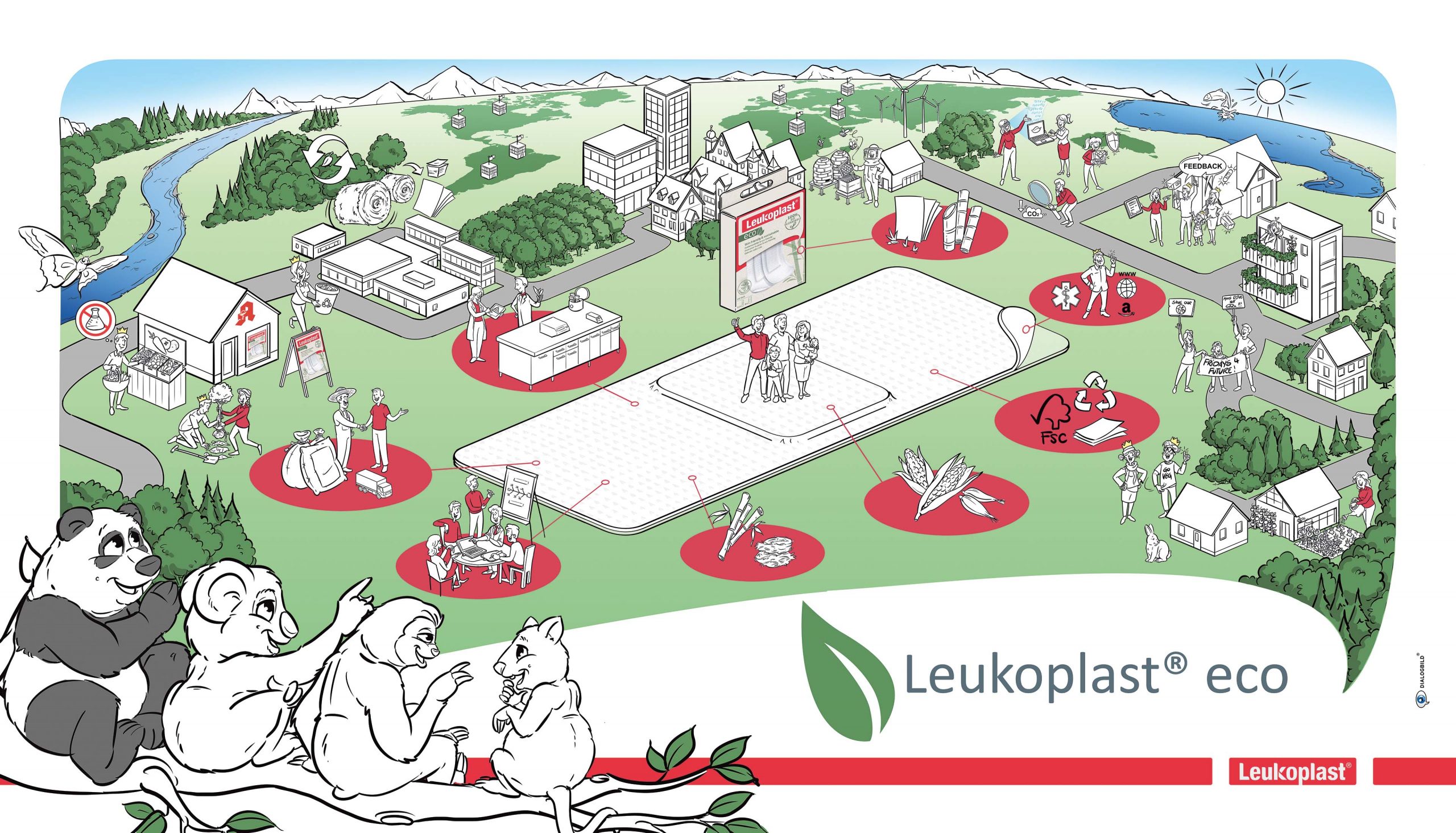
FOR THE SAKE OF THE ENVIRONMENT
Essity works with more than 48,000 employees to adapt its own brands to the demands and developments of the zeitgeist while maintaining its own high quality standards. The variance of the product range in the Health and Medical Solutions segment extends across five brands, which are based on the common focus on pleasant applications and successful therapies for patients and users. ...
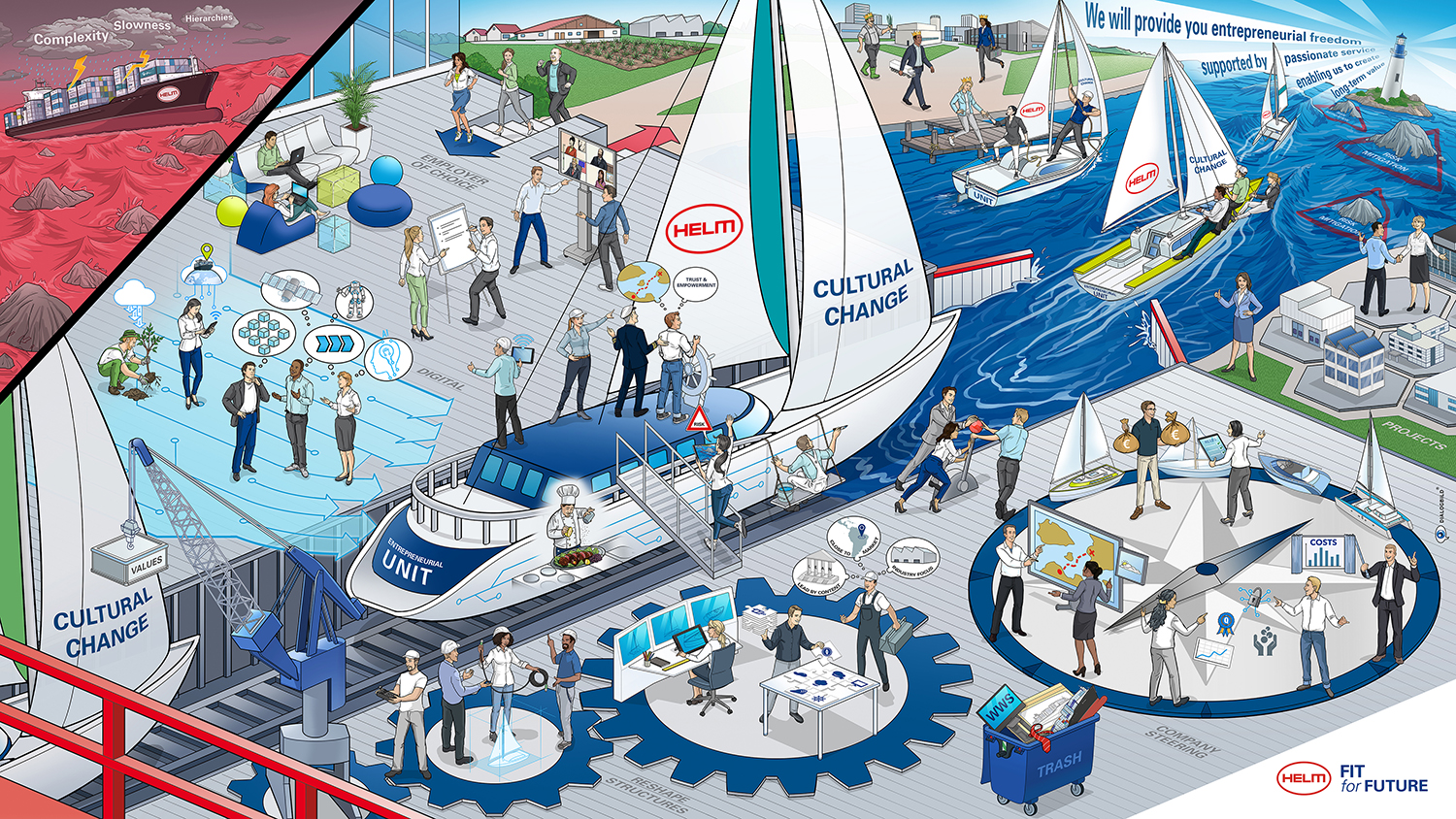
FIT FOR FUTURE
Helm is a globally active family-owned company headquartered in Hamburg, Germany. The fields of activity are the business units Chemicals, Fertilizer, Coop Protection and Pharma, which our company with its 1,500 employees takes care of.
In the course of the transformation process, we decided to use a dialog picture in order to communicate the different aspects and areas to our employees in an understandable and easy-to-remember way. For this purpose, each employee also received his or her own picture after the company meeting. ...
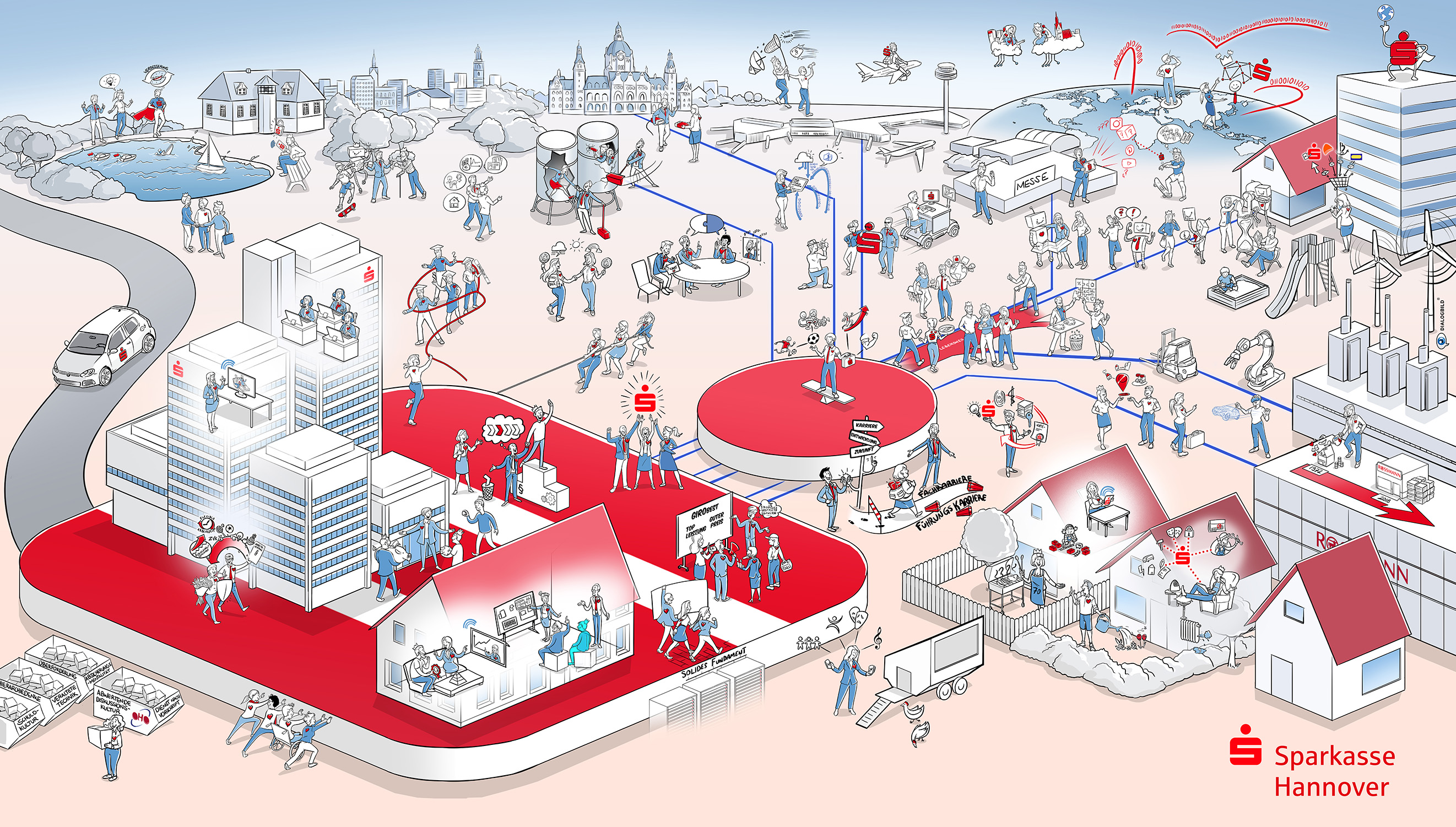
STRATEGY MAP: CULTURE CHANGE
AN IMAGE THAT STIMULATES DIALOG ABOUT THE FUTURE
Sparkasse Hannover, one of the largest savings banks in Germany, began to address the process of cultural change as early as the beginning of 2017. In several workshops, the questions "how is digital change changing Sparkasse Hannover?", "what does Sparkasse Hannover stand for in the future?" and "what common goals do we have?" were discussed from both employee and customer perspectives and then visually translated.
Low interest rate environment, stricter regulation, high competitive pressure from banks and non-banks - this situation is the new reality in the banking business. It is not the circumstances that will change, but the institutions that will have to adapt to the new circumstances. Without strategic and operational adjustments, interest-based business models will not work in the low interest rate environment. ...
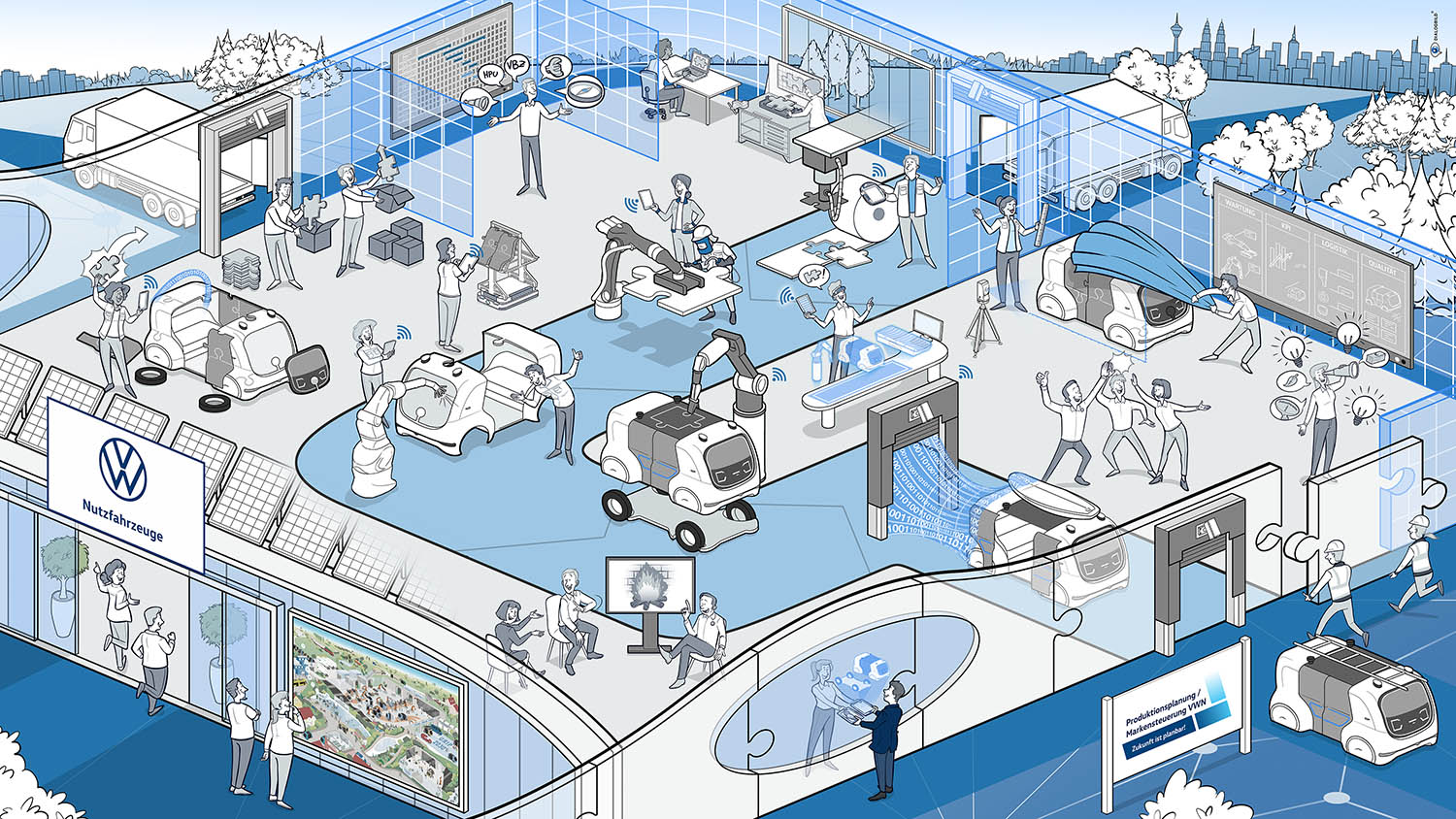
STRATEGY MAP: SMART PLANNING
- THE FACTORY OF THE FUTURE
With over 1,000 employees, Production Planning / Brand Management VWN makes a decisive contribution to the long-term corporate success of the Volkswagen Commercial Vehicles brand.
The department is responsible for shaping the production of tomorrow. Interdisciplinary teams develop concepts for the implementation of new vehicle projects. In addition to influencing products towards a production-oriented product design, the department also focuses on the production and on-time provision of systems and components.
As part of the strategy work, a visual world was developed in collaboration with DIALOGBILD that focuses on the interaction of the individual departments and the common goal of a SMART PLANNING factory. ...
Frequently Asked Questions: Change Process
What is a change process?
A change process describes the structured process of transformation within an organization. It encompasses all steps from the recognition of the need for change to its complete implementation and integration into the corporate culture.
What phases does a typical change process go through?
A typical change process goes through the following phases:
1. Preparation
2. Planning
3. Implementation
4. Stabilization
5. Evaluation
What is change management?
Change management is a systematic approach to managing change in organizations. It aims to make the transition from a current state to a desired target state as efficient and effective as possible.
What role do leaders play in the change process?
Leaders are key drivers of change. They must communicate the purpose of the change, provide resources, overcome resistance, and create a supportive environment.
What are proven change management methods?
Proven methods include:
- Kotter's 8-Step Model
- The ADKAR Model
- The Kübler-Ross Change Curve
How can resistance to change be overcome?
Strategies for overcoming resistance include:
- Actively listening and addressing concerns
- Clearly communicating the reasons for and benefits of change
- Offering support and training
- Identifying and developing change champions
How do you measure the success of a change process?
Success can be measured using various metrics, such as:
- Employee satisfaction
- Increased productivity
- Achievement of project goals
- Feedback from stakeholders
What role does communication play in the change process?
Communication is crucial for success. It ensures that all stakeholders are informed, understand the reasons for the change, and know what is expected of them.
How can DIALOGBILD support the change process?
DIALOGBILD supports the change process by:
1. Visualizing the entire process for better understanding
2. Promoting communication by providing a basis for discussion
3. Emotional activation to increase acceptance
4. Orientation by depicting the path from the current to the desired state
5. Motivating employees by visualizing goals and milestones
What resources are needed for a successful change process?
Key resources include:
- Sufficient budget
- Time
- Skilled workforce
- Necessary tools and technologies
- Employee training and support
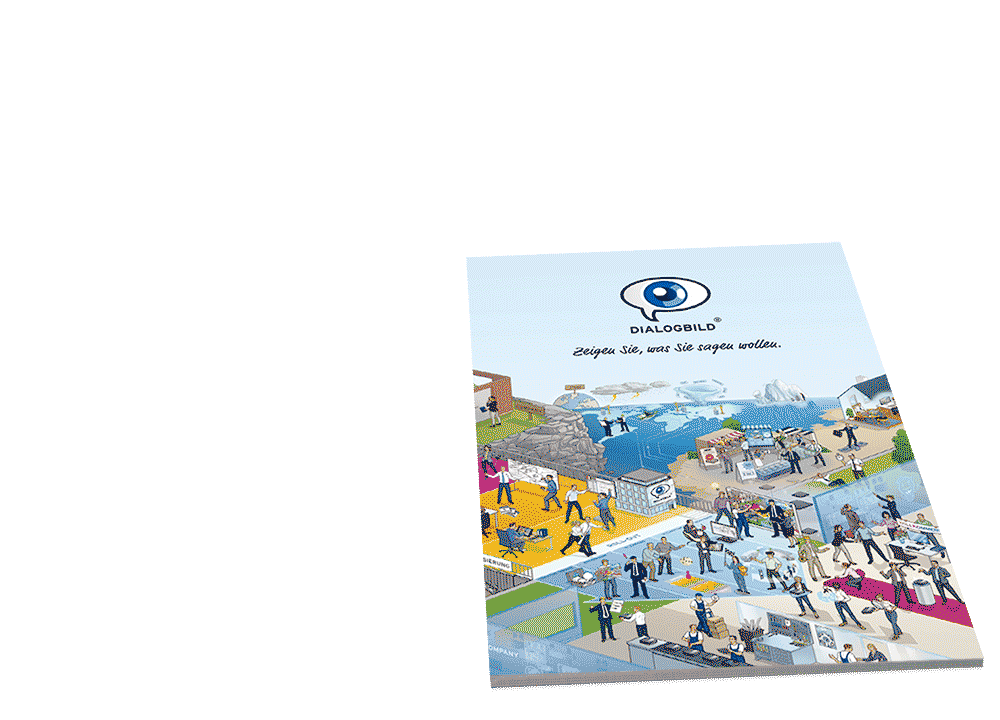 SELECT INFO PACKAGE
SELECT INFO PACKAGE